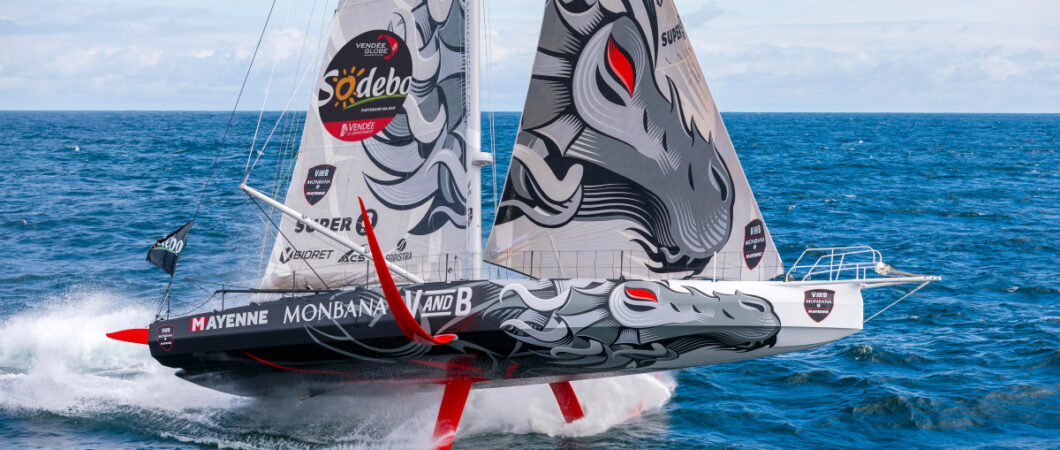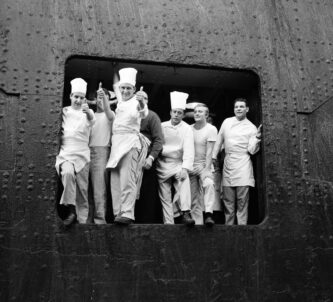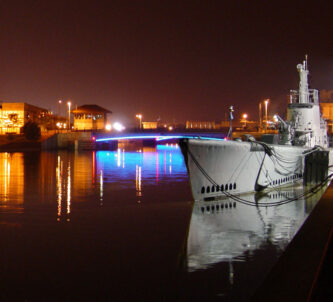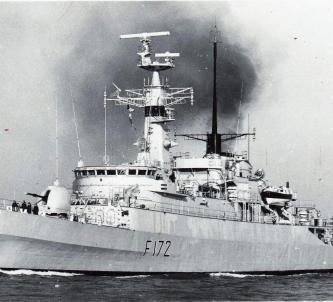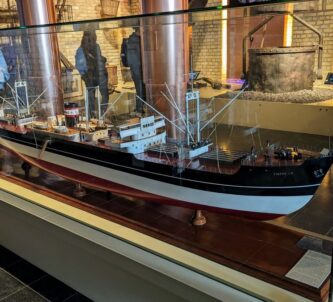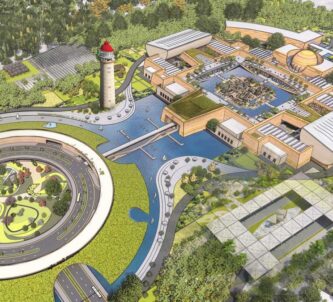Twenty five sailors, out of the forty who are setting off in the Vendée Globe 2024 solo round-the-world non-stop yacht race on 10th November, will take scientific equipment provided by UNESCO and its scientific partners on board their IMOCA yachts to deploy during the race.
This innovative project – the result of a partnership between UNESCO, the Vendée Globe and the IMOCA Class- will enable the collection and distribution of essential real-time data to scientists looking to improve operational weather forecasting services, particularly in the less frequented areas of the globe such as from the Big South, the remote Southern Ocean.
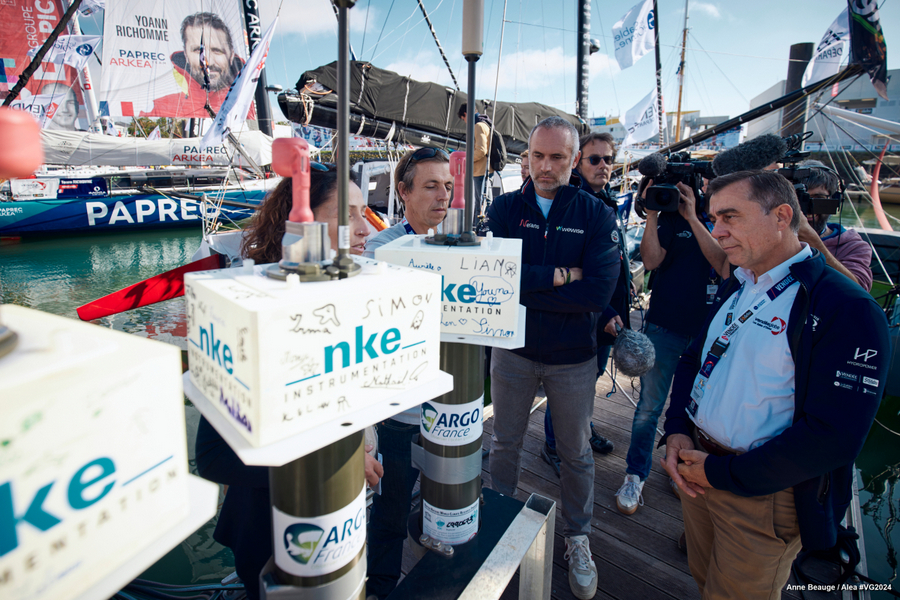
The skippers who have volunteered to take the weather-marine measuring instruments are receiving them and being trained in their use, today at the race headquarters in Les Sables d’Orlonne.
Not all boats will be carrying the same instruments. Several types of instruments are being utilised such as surface buoys, weather stations, autonomous Argo subsurface profiling floats, educational buoys (Calitoo) and thermosalinographs. Some boats are taking two instruments, one skipper, Antoine Cornic, is taking three.
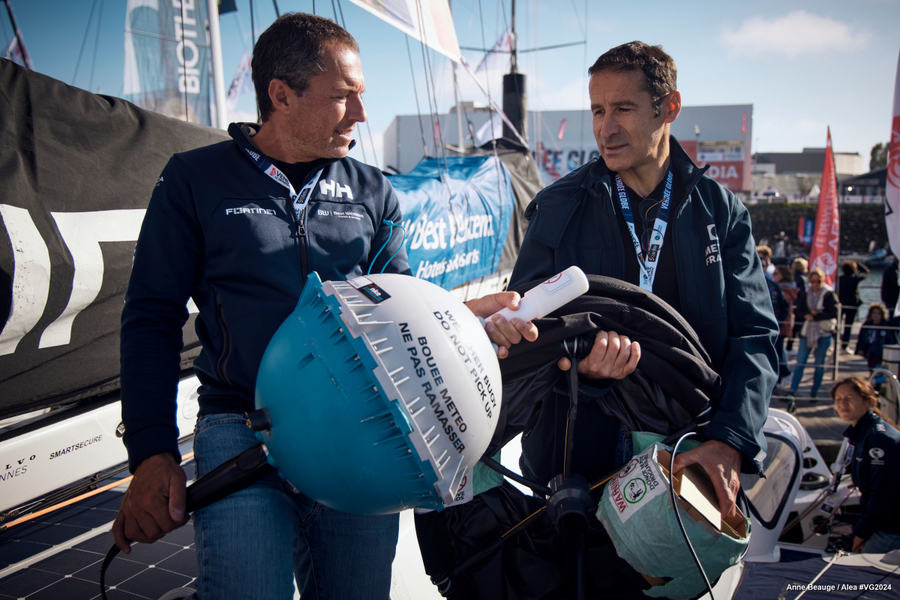
The data collected during and after the race, as well as the buoys deployed, will feed the Global Ocean Observing System (GOOS) which is coordinated by UNESCO.
This scientific equipment is provided by a number of institutes sharing the same vision, stakeholders of GOOS: Ifremer, Météo France, UK MetOffice, CNES, GEOMAR, CLS, the TARA Fondation, ETH Zurich. The technical coordination of all these instruments and operations will be ensured by the UNESCO International Centre of Excellence for the Coordination and Monitoring of Meteorological and Oceanographic Observing Systems (OceanOPS).
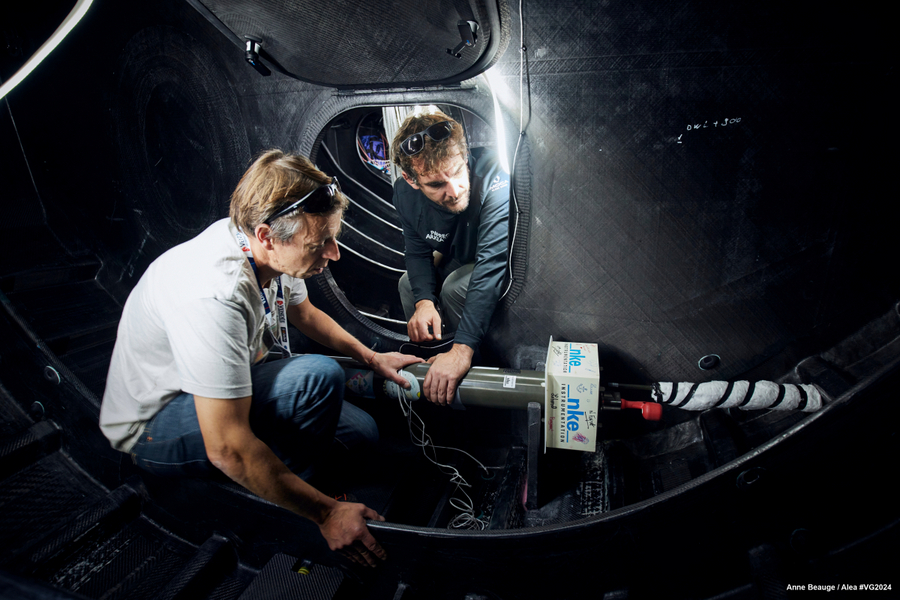
So how exactly does this work?
Sébastien Péré who oversees the distribution of the weather buoys (the round ones) on behalf of Météo France’s Centre de Météorologie Marine in Brest, says that 8 skippers have loaded their drifting buoys which measure sea level pressure, plus sea surface temperature and current, down to a depth of 15m. They transmit real time data for the whole scientific community. The desired locations for deployment have been chosen by matching their need for data in certain areas with previous race paths. The skippers will then deploy when they cross their recommended latitude (Atlantic) or longitude (Antarctic). The skippers will decide when it is safe to deploy, but interestingly (these things are pretty robust) they don’t have to slow down!
Once deployed, how long do the buoys operate? Well, Sébastion says: “The average life expectancy is about 2 years but, e.g. , the buoy deployed by skipper Manu Cousin during VG2020 is still alive after 4 years. The maximum is about 9 years!”
The 25 skippers who are taking on measuring instruments:
- Denis Van Weynbergh (Weather Buoy)
- Fabrice Amedeo (OceanPack + Argo Float)
- Yoann Richomme (Argo Float + ARGOS Marget II)
- Louis Duc (Weather Buoy)
- Manu Cousin (Weather Buoy)
- Louis Burton (Calitoo)
- Jingkun Xu (Argo Float)
- Oliver Heer (OceanPack + Argo Float)
- Antoine Cornic (TSG Gaillard + Weather Buoy + Weather Station)
- Tanguy Le Turquais (Weather Station)
- Kojiro Shiraishi (Argo Float)
- Sam Goodchild (Argo Float + Calitoo)
- Sébastien Marsset (Weather Station + Argo Float)
- Romain Attanasio (TSG Gaillard + Weather Buoy)
- Boris Herrmann (OceanPack + Weather Buoy)
- Guirec Soudée (Argo Float)
- Maxime Sorel (Argo Float)
- Szabi WEORES (Argo Float + Weather Station)
- Arnaud Boissières (Weather Buoy + Calitoo)
- Sam Davies (Calitoo)
- Pip Hare (Calitoo)
- Paul Meilhat (Planctoscope)
- Nicolas Lunven (OceanPack)
- Benjamin Dutreux (Weather Station)
- Clarisse Crémer (Weather Buoy)
The initiative is ongoing. In line with the environmental commitments made by the Vendée Globe to UNESCO, taking such scientific equipment will be made mandatory for all competitors in the rules of the next race in 2028.
The Mechtraveller mission statement is to reveal historical, mechanical and technological excellence… “and where you can see it”. I freely admit that unless you happen to be wandering the Southern Oceans, you are unlikely to see one of these buoys at work. But it’s an interesting initiative, and it’s not the first time I’ve written about the technology employed in both the Vendée Globe and the Golden Globe solo round-the-world races.

